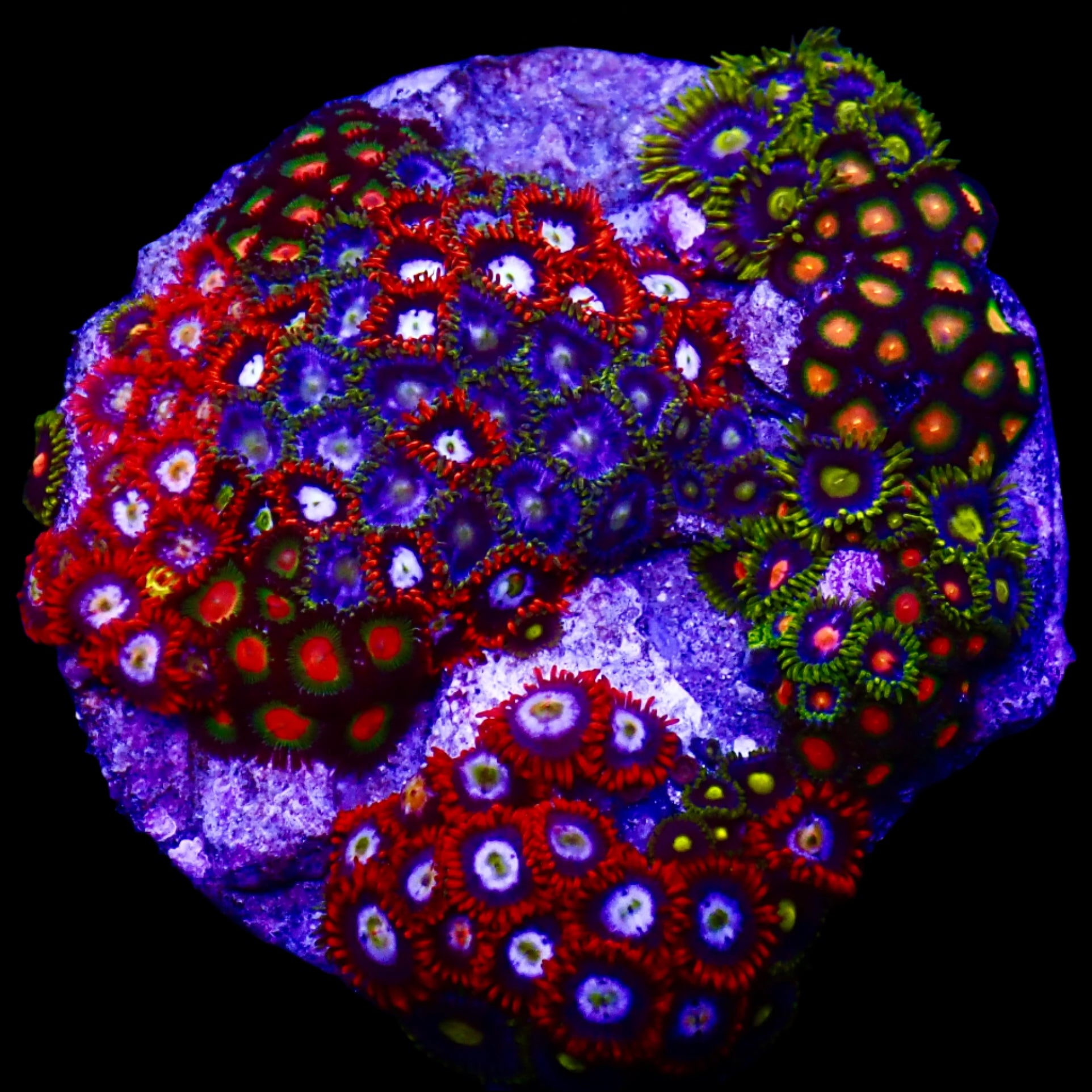
Coraux Indo Au
Zoanthidae Coral (Zoanthids) WYSIWYG
Available
The Zoanthidae, commonly known as Zoanthids, are soft corals highly sought after for their vibrant colors and ease of care. Available in a wide range of hues and patterns, they form colonies that quickly cover rocks and other surfaces, creating a stunning visual effect. Zoanthids are ideal for both beginner and experienced aquarists due to their hardiness and adaptability to various conditions.
Care Guide:
1. Tank Size and Setup:
• Minimum volume: 50 liters (13 gallons) to ensure stable parameters.
• Lighting: Low to moderate (recommended PAR: 50–150 PAR). Zoanthids adapt well to a variety of light intensities, but LED or T5 lighting enhances their vivid colors.
• Placement:
• Lower to middle areas of the tank, depending on light intensity.
• Leave space around them to allow for propagation.
2. Water Parameters:
• Temperature: 75–79°F (24–26°C).
• Salinity: 1.024–1.026 (specific gravity).
• pH: 7.8–8.4.
• Calcium: 400–450 ppm.
• Alkalinity (KH): 8–12 dKH.
• Magnesium: 1250–1450 ppm.
• Nitrates: Below 10 ppm (ideally 2–5 ppm).
• Phosphates: Below 0.05 ppm.
3. Flow:
• Moderate. A gentle to moderate flow encourages the polyps to thrive without causing stress.
4. Feeding:
• Zoanthids primarily rely on photosynthesis through their zooxanthellae, but supplemental feeding enhances growth and color intensity:
• Marine plankton, phytoplankton, or specific liquid coral foods for soft corals.
• Frequency: 1–2 times weekly.
5. Compatibility and Tank Mates:
• Reef-safe: Yes, Zoanthids are peaceful and adapt well to other corals.
• Ideal companions: Peaceful fish like gobies, clownfish, and non-aggressive invertebrates.
• Avoid: Certain butterflyfish or invertebrates, such as crabs, that may nip at their polyps.
6. Maintenance and Growth:
• Rapid growth under optimal conditions. Prevent overgrowth by limiting available surfaces if needed.
• Gently clean areas around colonies to avoid algae buildup.
7. Signs of Health:
• Fully open polyps with vibrant and vivid colors.
• No signs of bleaching or retraction.
8. Special Precautions:
• Zoanthids may contain toxins known as palytoxins, which are potentially dangerous to humans if touched or inhaled. Wear gloves during handling.
• Maintain stable water parameters and avoid sudden fluctuations.
 Telephone: 1 450-669-9256
Telephone: 1 450-669-9256 Email: sales@reefsolution.com
Email: sales@reefsolution.com




